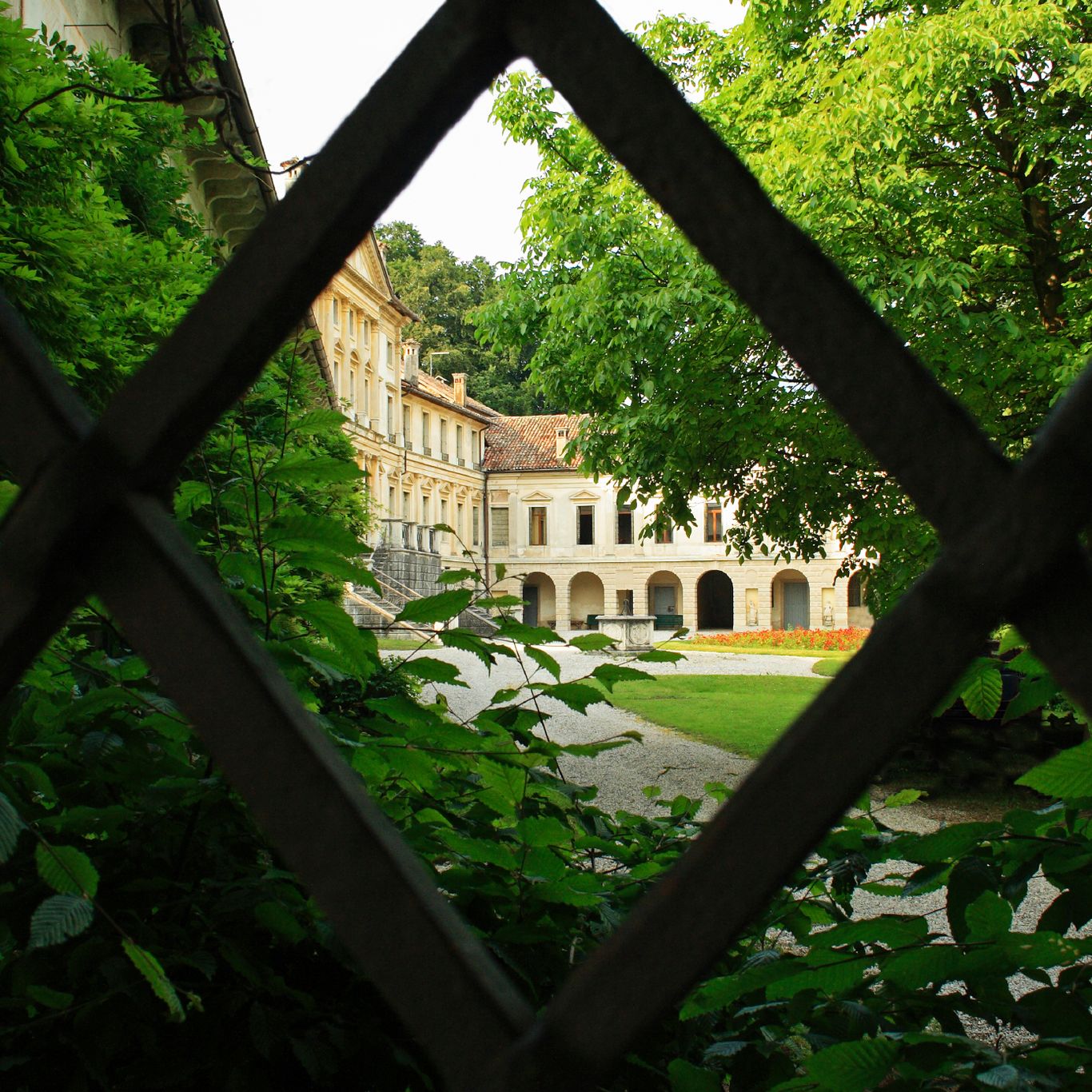Springwater Colony
A content larp for 30 players
Setting
This larp is centered around the Springwater Colony: a residential facility for the lifelong treatment and isolation of those afflicted with Loimos, an incurable infectious disease.
The vaccine developed some 30 years ago, however, means that facilities like Springwater are closing down: older patients pass away, incoming patients are incredibly rare, and, with the disease considered by most to be a thing of the past (and visitors still banned by paranoid medical boards), a resident might go years without seeing a new face, much less the family they may have left behind.
The larp takes place over an exceptional weekend during which Springwater will welcome some strangers: new patients as well as a pair of government inspectors. The latter are coming to inspect the facility and decide its fate, spurred on by a recent incident that resulted in the unprecedented escape of a patient and two deaths. Details are known to only a few yet whispered speculation abounds; with this pretext, the national newspaper has also received special dispensation to send a photographer and their top investigative reporters for a special exposé on life – and death – inside the residence.
The larp is set in the 1980s: advancements like smartphones, real-time global epidemiological studies, and predictive algorithms at the click of a button exist purely in science fiction if at all. The location and background culture are generic western European; social hierarchy among the residents is fairly flat, with an individual’s behavior having the greatest effect on their place in the isolated community. As in any community, the residents tend to group off by personality, hobbies, and commonly-held beliefs, but the residents cannot avoid someone they dislike or disagree with.
There is a religious Reverend in the game, but they represent the common local religion which has no parallel in the real world and are more of a general psychological counsellor than a dogmatic clergyperson. Spirituality however, what happens after one dies, and the meaning of life are frequent topics of discussion among the patients. Over their lives, many patients have been subjected to what we would consider inhumane treatment at the hands of medical authorities and certainly have been strictly isolated from broader society as the result of a disease they know will kill them and all of their neighbors. All of them have asked, some of them many times, “Why?” A sense of injustice still burns among some, but for most it is a fight they have long since abandoned.
The following documents are part of an information packet provided by Dr. Hollis Everett, head of the Springwater Residential Facility, to the visitors a week ago to prepare them for their inspection, although the contents are also common knowledge to all characters.
Loimos
Excerpt from Schmidt et al. (1962). Loimos for the vaccination generation. The Lancet, 300(7775), 493-504; an older article, but still considered the most recent review of the disease suitable for the layman:
Epidemiology and transmission: Loimos is caused by a common virus, Treponema loimos, which infects nerve cells via B-plasmid insertion (thereby replicating with every new cell). T. loimos has been identified in myriad albeit isolated natural sources as diverse as marsh soil in Kazakhstan, maned wolf scat in Bolivia, and eagle-owl livers in southern Sweden. It does not seem to affect animals and human infection from natural sources is incredibly rare.
The ensuing disease is often contracted early albeit is only rarely symptomatic before the teen years. Transmission occurs most commonly through extensive contact with the mucus (e.g., sputum, saliva, nasal, genital) produced by an infected person. Children are typically infected by a parent or grandparent with the disease through sharing glasses and utensils or being kissed on the face, while frequent local epidemic outbreaks in the ‘40s were determined to have been caused by insufficient drinking water filtration for public reservoirs in which infected persons had bathed.
Not all exposed contract the disease, although this phenomenon is yet unexplained. Of the general population, it is thought that 45-65% are naturally immune.
Symptoms and prognosis: Initially presenting as an itchy, pale pink rash across the torso post-puberty, the disease soon bears few physical indications. Muscle weakness and soreness, nerve tingling or pain, loss of sensation or fine motor control in the extremities or facial muscles are all common and may come and go throughout an individual’s lifetime, whereas lethargy and mild, placid confusion tends to remain fairly constant. This eventually becomes early-onset dementia (first symptoms around 40 years of age, occasionally as early as the third decade) and a rapid decline, death occurring usually 2-3 years later. Secondary infections (especially respiratory) are quite common and usually the cause of death. Lifespan rarely exceeds 60. Due to the increasing mental "fog", patients struggle to consistently hold down gainful employment or keep house.
Treatment and prevention: There is no known cure for Loimos. Treatment is purely palliative and includes basic nursing care as individuals cannot live alone; housing patients in strict isolation colonies has for many decades been the norm across the globe to minimize outbreaks.
The vaccine, developed collaboratively by labs in Geneva, Stockholm, and Atlanta, was first tested on human subjects in 1949 and released the following year in aggressive vaccination campaigns backed by the WHO and national governments worldwide. All public schoolchildren and most adults in North America, Europe, and Australia were vaccinated within the first decade and the campaign continues in Africa, Asia, and South America. In the early years of the vaccine, boosters were often administered but these were later deemed unnecessary. Vaccine efficacy continues to be monitored but it has been sufficiently high to deem further research for a cure unnecessary. Thus far, zero allergic reactions and only minor, temporary side effects (muscle pain, dizziness, nausea) have been reported post-vaccine.
As there are still living individuals with the disease (mostly in isolation colonies), it cannot yet be considered eradicated in any region, although there were only 16 new cases in the USA in the past year.

Isolation Order
Memo “Solution for the Loimos Epidemic” to the Minister for Health dated 12 August, 1913:
Per the recommendations of the chiefs of medicine from every tier 1 state hospital, we hereby codify the forced isolation of all persons known or suspected to be infected with Loimos in permanent residential colonies. The virulence of the disease (and mental incapacity of its victims) is such that we must take no chances that outbreaks be permitted to continue and as previous advisories have not been sufficiently adhered to, this is now a legal requirement for the public good.
A list of suggested residences follows to house the estimated 150,000 affected currently in the country. Some have already been outfitted as medical facilities and the remainder shall be allocated staff and outfitted with appropriate treatment rooms and resources (budget has been pooled together from disaster, training, and facility budgets). To retain some degree of self-sufficiency and limit costs, patients will be partially tasked with maintenance.
To ensure that the colonies do not grow and to prevent the need for institutions to be gender-specific, all patients are required to be sterilized on arrival. Patient consent is not necessary.
Handwritten note from Dr. Hollis Everett: The sterilization order was countermanded around the time of the first wave of vaccinations, approximately 30 years ago, but the isolation order remains in effect.”
Springwater Colony
An article in The National Tribune from 30 January, 1954, entitled “The Storied History and Silent Present of Springwater Estate”:
Once a refined country estate left to crumble with the reputation of its lordly family, Springwater Estate just outside Newton has been revitalized with sweeping gardens, dozens of stately bedroom suites, and even its own parsonage, but now serves a very different kind of resident.
The estate was first designed as a summer residence of Earl Thomas VII, who completed the villa and stables in 1783. Subsequent buildings and the gardens (said to be a gift to his mistress, Marie of Lancaster) were completed soon thereafter, with masons allegedly having been pushed so hard to complete their task that they slept on the rafters of the stable to save time climbing up and down! After Marie’s death in 1791, the Earl never returned to Springwater, leaving it to his third son in his will. A son with a love of gambling -- and bad luck. The gardens were neglected, the stable caught fire in 1799, and eventually the estate went to the taxman.
Springwater sat empty for some years after that, earning a reputation among the locals as a hideout for local thieves and layabouts. Only in 1913 did its transformation begin – into a modern sanatorium! The fresh, invigorating breeze, soothing landscape, and refinement of the building are obvious at first glance, making it the ideal location for victims of Loimos, that unfortunate disease. Managed by Dr. James Murphy, patients are provided with fine meals, cared for ‘round-the-clock by trained nurses, and live out their lives without a care in the world. Although it wasn’t possible to interview any of the residents for your author’s own safety, the view from the gate was clear that patients must think themselves in paradise already!
Playing with Illness
Loimos is a fictional illness, but one inspired by real diseases like dementia, leprosy, and COVID-19. The way the patients in this larp have been treated and stigmatized by society and medical professionals is very similar to the way real people with leprosy were treated for hundreds of years around the world. Some aspects of the Springwater Colony fiction, specifically forced sterilization and anti-vaccination movements, are also drawn from awful aspects of history and current events, and this larp is in no way intended to glorify these harmful practices and beliefs.
It is important to us as larp organizers that we all treat these topics with the sensitivity they deserve, and these topics will be a part of the pre-game briefing and also handled within the debrief after the game. While we would not go so far as to classify Springwater Colony as an edularp, we at SIF Games believe that larp can serve to provide players with a better understanding of a unique human experience, and that is what we aim to provide.
Characters will spend their game doing very gentle activities (chores and pastimes), scheming against the world, each other, or themselves, and facing fundamental questions of the meaning of life. Some characters will do their best to expose secrets and dark histories that challenge their beliefs about themselves, while others will simply try to figure out what they really want and how to get it when it seems impossible. It is a larp intended to produce internal play about existentialism, and storylines will develop slowly throughout the duration of the larp.
Characters with Loimos should not be played as caricatures of people with dementia, although they might show less energy than those without. Players of these characters will be encouraged to express symptoms only so far as it is interesting to play on and this will be discussed and workshopped before the larp. Only a couple of characters have a moderate to severe form of the illness, and this will largely be expressed through brain fog and misremembering events rather than constantly making a point of being urgently confused, lost, or upset.
© Copyright. All rights reserved.
Wir benötigen Ihre Zustimmung zum Laden der Übersetzungen
Wir nutzen einen Drittanbieter-Service, um den Inhalt der Website zu übersetzen, der möglicherweise Daten über Ihre Aktivitäten sammelt. Bitte überprüfen Sie die Details in der Datenschutzerklärung und akzeptieren Sie den Dienst, um die Übersetzungen zu sehen.
